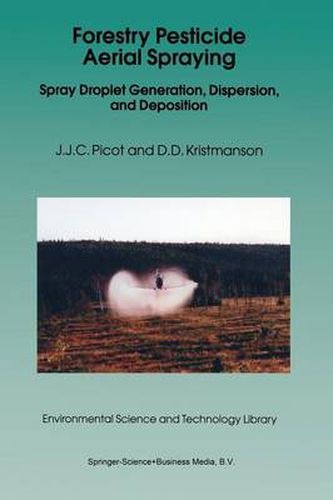Readings Newsletter
Become a Readings Member to make your shopping experience even easier.
Sign in or sign up for free!
You’re not far away from qualifying for FREE standard shipping within Australia
You’ve qualified for FREE standard shipping within Australia
The cart is loading…






This title is printed to order. This book may have been self-published. If so, we cannot guarantee the quality of the content. In the main most books will have gone through the editing process however some may not. We therefore suggest that you be aware of this before ordering this book. If in doubt check either the author or publisher’s details as we are unable to accept any returns unless they are faulty. Please contact us if you have any questions.
Introduced to the technical aspects of forestry aerial spraying in the mid-1970’s, we were immediately impressed by the complexity of the process of delivering pesticide to foliage. At that time, there was a vigorous public debate in New Brunswick about the ecological and public h~alth impacts of the annual spray program for the control of defoliation of spruce and fir trees by the spruce budworm. The forest industry is important to the province and changes to the established procedures of budworm control could have major economic implications. A rational debate required reliable information about the mechanics of the spraying process. There was a need to supply missing information as to required pesticide application rates, atomizer performance, off-target drift and deposit, and the effects of weather and aircraft operating factors. We were invited to initiate a research program in this domain by New Brunswick forest management officials, and what follows in this book is a logical and quantitative description of the overall process based on our own research and that of others over the intervening years. After a short introduction to aerial spraying, we begin (Chapter 2) by describing forest stands in terms of their interaction with suspended atmospheric particulate material carried along by the wind and susceptible to deposition on foliage. We introduce foliage simulators and their use in measuring the deposit of sprayed pesticide on foliage, the biological interface between pest and pesticide.
$9.00 standard shipping within Australia
FREE standard shipping within Australia for orders over $100.00
Express & International shipping calculated at checkout
This title is printed to order. This book may have been self-published. If so, we cannot guarantee the quality of the content. In the main most books will have gone through the editing process however some may not. We therefore suggest that you be aware of this before ordering this book. If in doubt check either the author or publisher’s details as we are unable to accept any returns unless they are faulty. Please contact us if you have any questions.
Introduced to the technical aspects of forestry aerial spraying in the mid-1970’s, we were immediately impressed by the complexity of the process of delivering pesticide to foliage. At that time, there was a vigorous public debate in New Brunswick about the ecological and public h~alth impacts of the annual spray program for the control of defoliation of spruce and fir trees by the spruce budworm. The forest industry is important to the province and changes to the established procedures of budworm control could have major economic implications. A rational debate required reliable information about the mechanics of the spraying process. There was a need to supply missing information as to required pesticide application rates, atomizer performance, off-target drift and deposit, and the effects of weather and aircraft operating factors. We were invited to initiate a research program in this domain by New Brunswick forest management officials, and what follows in this book is a logical and quantitative description of the overall process based on our own research and that of others over the intervening years. After a short introduction to aerial spraying, we begin (Chapter 2) by describing forest stands in terms of their interaction with suspended atmospheric particulate material carried along by the wind and susceptible to deposition on foliage. We introduce foliage simulators and their use in measuring the deposit of sprayed pesticide on foliage, the biological interface between pest and pesticide.